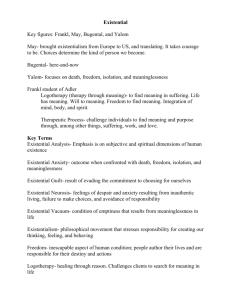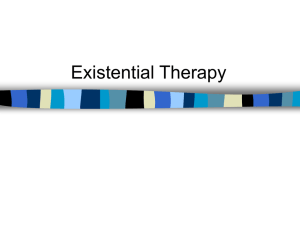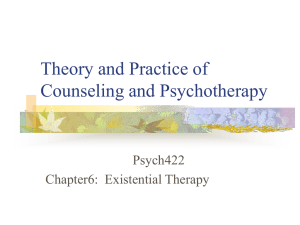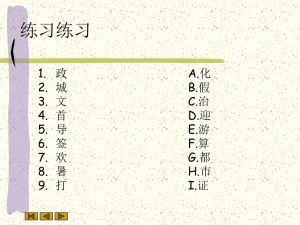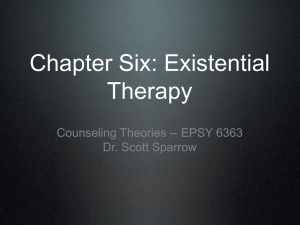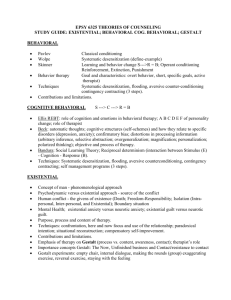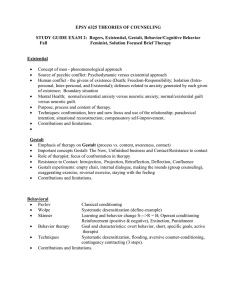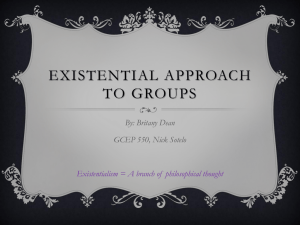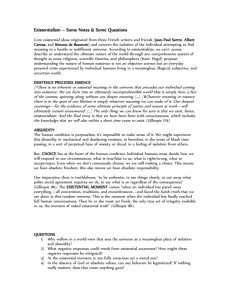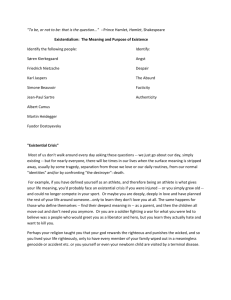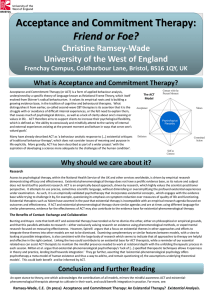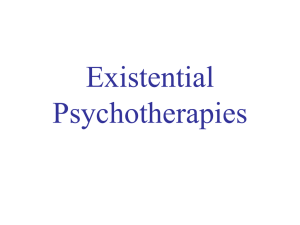Tiller: Existential Pain Power Point
advertisement
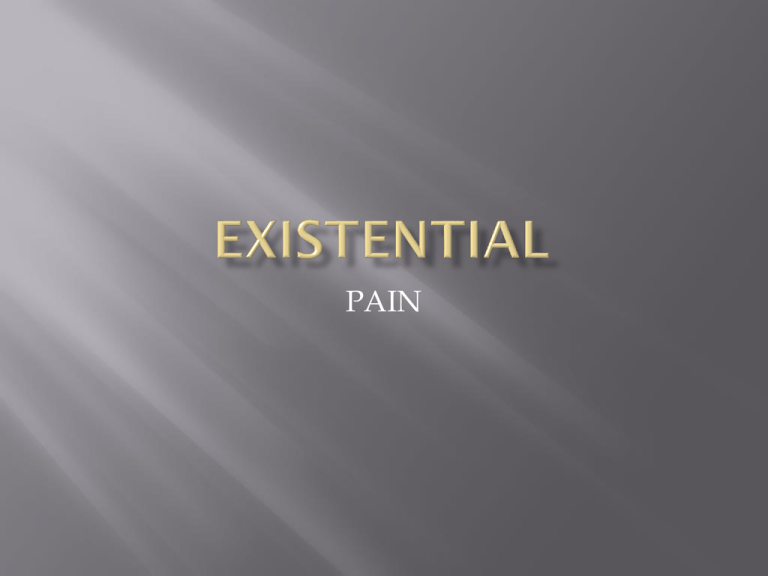
PAIN New concept Generally agreed upon that it exists Definition variable You are born alone and you die alone the rest doesn’t matter. Steve Jobs Mahar 1955 began to develop the concept of pain as being both somatic and physical. This became more expansive to differentiate between acute and chronic Acute serves as physiologic warning Chronic pain is “associated with endless meaningless suffering” Mahar Lancet 268 (1955) Mental distress may be the most intractable pain of all. C. Saunders “Treatment of Intractable Pain in terminal cancer” Spiritual Pain Bitter anger at the unfairness of what is happening and above all a desolate feeling of meaninglessness. Suffering is experienced by persons not merely bodies. NEJM 306 (1982) The nature of suffering and the goals of medicine. Meaning is essential for life and people are looking for or creating meaning, as meaninglessness is impossible to endure. Distinction between fear, for something and diffuse unfocused anxiety (dread) Focused on death anxiety and the dread for annihilation. Concept of man’s freedom Man is doomed to freedom, meaning that man must always chose and choices creating anxiety Freedom which means that man must always choose ( unethical choices) The question of meaning and meaninglessness Existential isolation Death Current definitions are as varied as the disciplines and biases of those defining the concept of existential pain Journal of pain and symptom management, Strang and Strang, illustrated this concept Stressed guilt issues as well as various religious questions Stressed existential pain as related to annihilation and impending separation Emphasized living is painful Patient dignity inventory (PDI) Chochinov et al Patient reports on the factor of their existential distress such as, Not feeling worth while Not being able to carry out important roles Life no longer has meaning Feeling a burden Primary goal to improve quality of life Development of sensitivity and trust relations and awareness of the patient’s existential concerns Spiritual/religious counseling Meaning-centered therapy Cognitive behavioral interventions Psychoeducational counseling Hypnotically facilitated therapy Life tape project Family counseling Corticosteroid treatment Rousseau notes that existential suffering can be as refractory and agonizing as physical symptoms 1) Patients must have a terminal illness 2) A DNR order must be in place 3) All palliative treatments must be exhausted 4) A psychological assessment must be completed 5) An assessment of spiritual issues should be completed Is it palliative or is it physician assisted suicide? Removal of life sustaining measures after PS initiated Slippery Slope: Palliative sedation as an alternative versus an encouraged option Jack Kevorkian William Osler “Given the uselessness of men above 60 years of age and incalculable benefits might arise from such a scheme” Statement made in relation to Trollope’s The Fixed Period. Derek Humphry, Founder of the Hemlock Society 2002 National Health Survey: 40% of patients affirmed use of CAM Therapy Most common spiritual and religious: 22% Music and Pet Therapy: 16% and 14% Followed by other varieties of intervention Used in multiple medical conditions for pain Hospital beneficial effects; sedation/euphoria, appetite stimulation Major Criteria A. Depressed mood B. Loss of interest in pleasurable activity Other criteria must have at least 4 of these in addition to one of the major criteria A. Weight change B. Sleep disturbance C. Psychomotor agitation or retardation D. Fatigue E. Guilt, worthlessness F. Diminished ability to think or concentrate G. Recurrent thoughts of death (suicide) Excessive worry or anxiety more days than not over a 6 month period. Difficult to control worry’ At least 3 of the following 6 symptoms A. Restlessness B. Fatigue C. Decreased concentration D. irritability E. muscle tension F. Sleep Distubance If we have time
